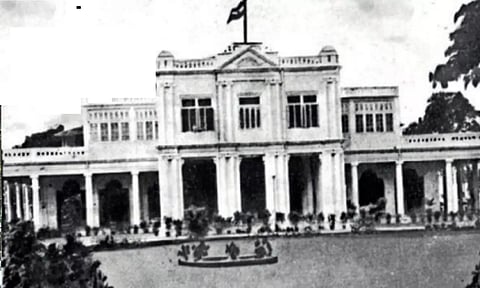

CHENNAI: MADRAS houses many institutions that are over 100-years old. But most of them went through a lean patch in between. One strong institution that caters to a niche section of people from Madras, is the cosmopolitan club.
Though termed as ‘islands of snobbery’ and colonial left behind with century old rules, clubs have been a hub for socialising.
Socialising away from your fixed circle started gaining its popularity in Shakespearean England. Of early clubs the most famous, latterly, was the Bread Street or Friday Street Club that met at the Mermaid Tavern on the first Friday of each month. The use of the word “club” originated in its meaning of a knot of people, or from the fact that the members “clubbed” together to pay the expenses of their gatherings.
The idea of the formation of a Club which was Cosmopolitan in its charisma, transpired between some of the elite gentlemen of Chennai. the Cosmopolitan Club, was originally located at Moore’s Garden in Nungambakkam (which was rented out by the Hon’ble Mir Humayun Jah Bahadur, grandson of Tippu Sultan) and was referred to as the “club house”.
The club started rolling with just 39 members in its initial days. In 188, it was decided that the club would be moved to a central locality convenient to members.
The current club building close to the Cooum river on Mount Road
in August 1881, was one of the largest land deals those days. It cost the members a princely Rs 17,000. The property consisted of one Cawnie, 13 grounds and 1404 sq.ft. Like most of the large properties on Mount Road in the pre-car era this was possibly a stable with a coach rental facility, belonging to Simpsons.
It is still one of the largest green spaces and provides a lung space to Mount Road with its century-old lush trees. Members from outstation members called mofussil members were admitted. Local members paid Rs 3 and mofussil members paid Rs 1 as annual fee.
The colonial building with a Victorian portico, hardwood floors, high ceilings reminds one of the raj. It was also one of the earliest clubs to allow natives, especially when most clubs across the British empire still had boards that read, “Dogs and Indians not allowed beyond this point”. The entire bench of the Madras High Court in British times could be seen at the club, post court hours.
Much of the social interaction between the rulers and people under them, took place in this club initially but most British members left soon.
It was like a second home for the zamindars of the Madras Presidency. One zamindar from the south, terrified of his wife plotting a murder against him, stayed in the club for years. it was said the menus were decided by him in the mornings.
The club is on Mount Road and has some famous neighbours. The Suguna Vilas Sabha bought the adjacent plot to build its auditorium but by the energy of the place it has changed into a social club as well.
The club has evolved over 150 years and in the interests of its Indian members. With increasing vegetarians, the architects decided to have special cutlery and crockery for meat eaters and vegetarians. The architects even went one step ahead and placed the veg and non-veg kitchens on different floors so there would be no inadvertent mixing. In its prime, a continental dinner could be served on silverware or a Tanjore meal on a plantain leaf. Some raj customs like the ballot boxes, are still used for the members to decide by putting a wooden ball in the ‘yes and no’ boxes to decide on new memberships. Putting a no ball was called black balling. The most famous person to have been blackballed in the Cosmopolitan Club was lawyer Krishnaswamy Iyer. He was not liked by many Europeans, who gathered in great numbers on the voting day to fill the No box. An angry Krishnaswamy started the Mylapore club soon thereafter on Luz.
With nationalism at its peak, Gandhi on a visit to Madras was requested by a majority of the members to visit the club. The President of the club and a Justice Party politician, Thyagaraya Chetty after whom T Nagar is named, was not for it. He boycotted the function. On the lighter side of events, Gandhi broke the dress code of the club, which is strictly adhered to even today. When members wearing shirts without collars are not allowed to enter, Gandhi came in shirtless. The vice president and other members welcomed him with a garland of khadar. Today a bust of Gandhi and a lifesize oil painting are displayed in prominent places.
The club being the centre of social and political activities attracted many leaders. Jawaharlal Nehru and Netaji Subhash Chandra Bose, Rabindranath Tagore and Rajendra Prasad, have visited the club. In colonial times Edward the prince of Wales and his aide de camp ( later lord Mountbatten), who was being boycotted throughout Madras at that time visited the club to meet some of its loyal citizens.
The Maharajah of Travancore donating his lands to what belonged to the first agricultural college in India, were later made into a golf course. The Travancore pavilion permitted boating on the then clean Adyar River.
Structurally there have been concrete changes to the colonial structure but with a thought on preserving the heritage, most of the original brick and lime building has been kept intact.